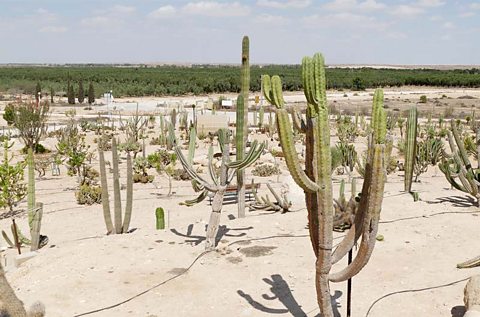
Adaptation is a crucial process through which species evolve to enhance their survival and reproductive success in response to environmental pressures. This process is influenced by three main types of adaptations: physiological, structural, and behavioral. Through these adaptations, animals and plants can find food, avoid predators, maintain homeostasis, and thrive in various habitats.
The Mechanisms of Adaptation
Adaptations arise through a process called natural selection, which occurs when certain traits enhance an individual's ability to survive and reproduce in its environment. When individuals with advantageous traits produce more offspring, those traits become more common in the population over generations. This gradual process contributes to the evolution of species, leading to noticeable differences that enhance fitness in specific habitats[4][7][8].
Types of Adaptations
Physiological Adaptation: These involve internal changes that help organisms maintain normal bodily functions in fluctuating environments. For example, the physiological adaptations of desert animals, such as camels, include the ability to conserve water and withstand long periods without drinking. Camels have humps that store fat, which may be metabolized for energy when food sources are scarce[2][8].
Structural Adaptation: These are physical features that improve survival in specific environments. For instance, the thick fur of polar bears provides insulation against cold temperatures, while their white coats serve as camouflage in snowy conditions, aiding in hunting[2][3].
Enhanced physical traits like long necks in giraffes allow them to reach high foliage, giving them access to food unavailable to shorter competitors[5][7].
title: 'A polar bear walking towards the camera in the snow.' and caption: 'a polar bear walking in the snow' Behavioral Adaptation: These adaptations are changes in behavior that enhance survival. For example, migration is a behavioral adaptation that allows species to move to more favorable environments during unfavorable seasons. Hibernation is another form, where animals lower their metabolic rates to survive during the winter when food is scarce[3][8].
Natural Selection in Action
Natural selection plays a vital role in facilitating adaptation. This process can be illustrated through notable examples:
Camouflage and Mimicry: Many species employ these strategies to evade predators or enhance hunting success. For instance, the peppered moth (Biston betularia) has evolved color variations that correlate with the level of pollution in its environment. In industrial areas, darker moths were favored as they were less visible against soot-covered trees, while in cleaner areas, lighter moths were more common[6][9]. Similarly, the mimic octopus can change its appearance to resemble other species, helping it evade predators[3].
Case Studies of Adaptation: Research on Galápagos finches demonstrates the impact of environmental changes on species adaptation. During periods of drought, finches with smaller beak sizes were favored due to the availability of smaller seeds, leading to a decrease in the average beak size in the population over generations[7]. This adaptive change illustrates how environmental pressures can lead to rapid evolutionary responses.

title: 'adaptive radiation in Galapagos finches' and caption: 'a diagram of a bird's head'
Evolutionary Implications
Adaptation also involves evolutionary concepts such as speciation, where one species diverges into two or more distinct species due to differing environmental pressures. For instance, marsupials in Oceania have developed unique adaptations to thrive in various ecological niches after separating from their placental relatives[5][9].
Moreover, adaptation is not static; it can shift as environmental conditions change. For example, genetic variations that once provided a survival advantage may become less beneficial if the environment evolves or fluctuates significantly[7][8].
Conclusion
The process of adaptation through natural selection illustrates the essential strategies that species utilize to survive and reproduce in their environments. Physiological, structural, and behavioral adaptations enable organisms to cope with and respond to environmental pressures. Understanding these mechanisms highlights the dynamic nature of evolution and the ongoing interplay between organisms and their surroundings. As environments change, continuous adaptation remains crucial for the survival of species on Earth.
Get more accurate answers with Super Pandi, upload files, personalized discovery feed, save searches and contribute to the PandiPedia.
Let's look at alternatives:
- Modify the query.
- Start a new thread.
- Remove sources (if manually added).